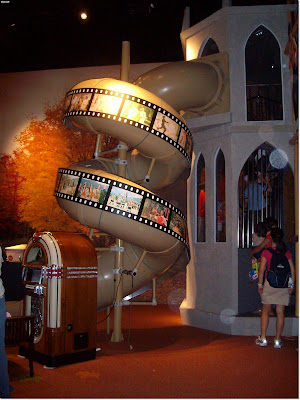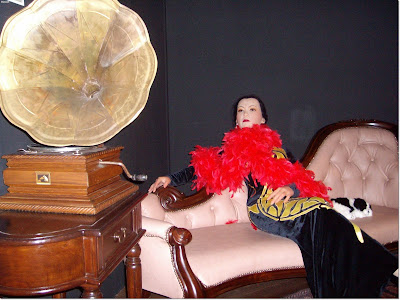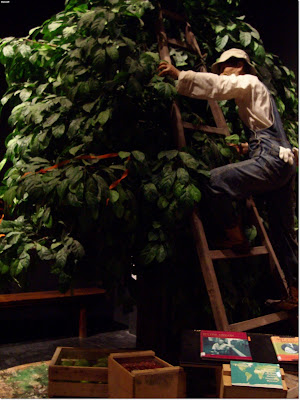Hua Song, meaning "In the praise of the Chinese", is a museum that brings to life the rich heritage that overseas Chinese around the world share.
Located in the new wing of Haw Par Villa, Hua Song
Museum offers visitor the chance to appreciate the spirit of adventure and of the early Chinese migrants around the world, who made countless sacrifices, sized opportunities amidst adversity, showed great fortitude and industry to make good in their adopted land.
It showcases the dreams, sacrifices, successes and achivements of the Chinese who faced adversities in their search of fortune overseas, enabling Chinese today to embrace their cultural roots and origins. Friends of other ethnicities and nationalities will recieve a glimpse into the struggles of the overseas Chinese who have assimilated and contributed to the modern society, fostering mutual appreciation and understanding. Their stories are of international and cross-cultural relevance and appeal today.
Only by paying tribute to our shared past, can we surge forward into the future confidently. Hua Song Museum marks another milestone in our efforts to commemorate our cultural heritage.
 Today sunset was beautiful, it was red in colour but a pity that I could not capture it clearly because I was using the zoom tool and that sun really set in a very fast speed.
Today sunset was beautiful, it was red in colour but a pity that I could not capture it clearly because I was using the zoom tool and that sun really set in a very fast speed. The China to Chinatown section tells the stories of how migrants and their descendants assimilated into their new adopted lands. This section feature pictures of the early generations of migrants. It also tells how these migrants attempted to preserve their identity and nurture a relationship with the locals, the pastimes they engaged in, the bonds they formed, etc.
The China to Chinatown section tells the stories of how migrants and their descendants assimilated into their new adopted lands. This section feature pictures of the early generations of migrants. It also tells how these migrants attempted to preserve their identity and nurture a relationship with the locals, the pastimes they engaged in, the bonds they formed, etc.

A sampling of Chinese movies and songs from the 1950s and 1960s depicting Chinese popular culture are featured in this hall, a good venue for both corporate events and theme parties.
This was the jukebox they have in the olden days
 "Robust like bamboo, able to thrive in rich soil and stay alice in poor soil the early Chinese immigrant had to bend and blend in to survive." While the stories in the archival area are mostly about men, this section of the museum pays tribute to the women who migrated overseas and played a pivotal role in the development of Chinese overseas communities.
"Robust like bamboo, able to thrive in rich soil and stay alice in poor soil the early Chinese immigrant had to bend and blend in to survive." While the stories in the archival area are mostly about men, this section of the museum pays tribute to the women who migrated overseas and played a pivotal role in the development of Chinese overseas communities.



Women who fall into the clutches of the syndicates go through a humiliating process before they set to work as prostitutes. Here is their story after their kidnap.
Batches of 50 to 100 women are kept in a closely guarded room, known as a "barracoon", stripped for inspection and displayed for auction. Then they are forced to sign a "contract" with their thumbprints. Some has died before their contracts were fulfilled. Others either committed suicide or ran away.

Anna May Wong (January 3, 1905 – February 2, 1961) was the first Chinese American actress to achieve stardom in a career that spanned both silent films and talkies, the stage, radio and television, even hosting her own television show at one point. This is all the more remarkable considering the racist times in which she worked. Many Asian actresses have been acclaimed since, under less adverse conditions, but none have reached Wong's level.

The Chinese are well known for their passion for food and for the early Chinese immigrants, food was one of the most important links they had with China. Within this exhibition area, there are interesting stories and facts about Chinese food.
This is a replica of a typical traditional Chinese kitchen allowing visitors to interact with the various cooking utensils. Visitor will also be able to learn about the common ingredients used in cooking Chinese cuisine and touch, as well as smell the ingredients.

For more information about the exhibits visit Huasong.org











































0 comments
All comment will be review before publishing